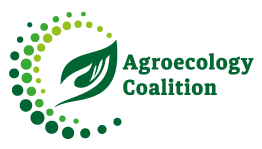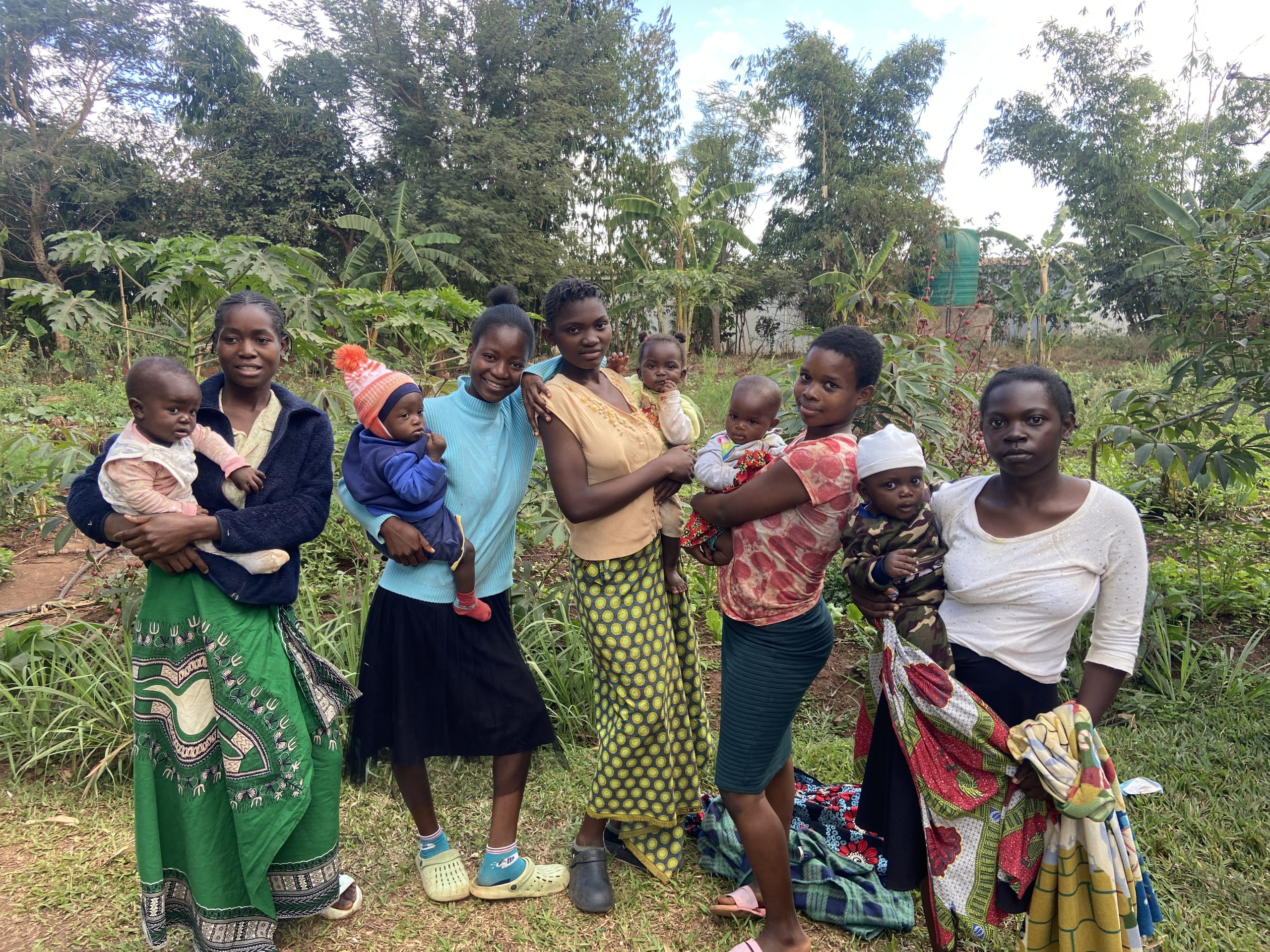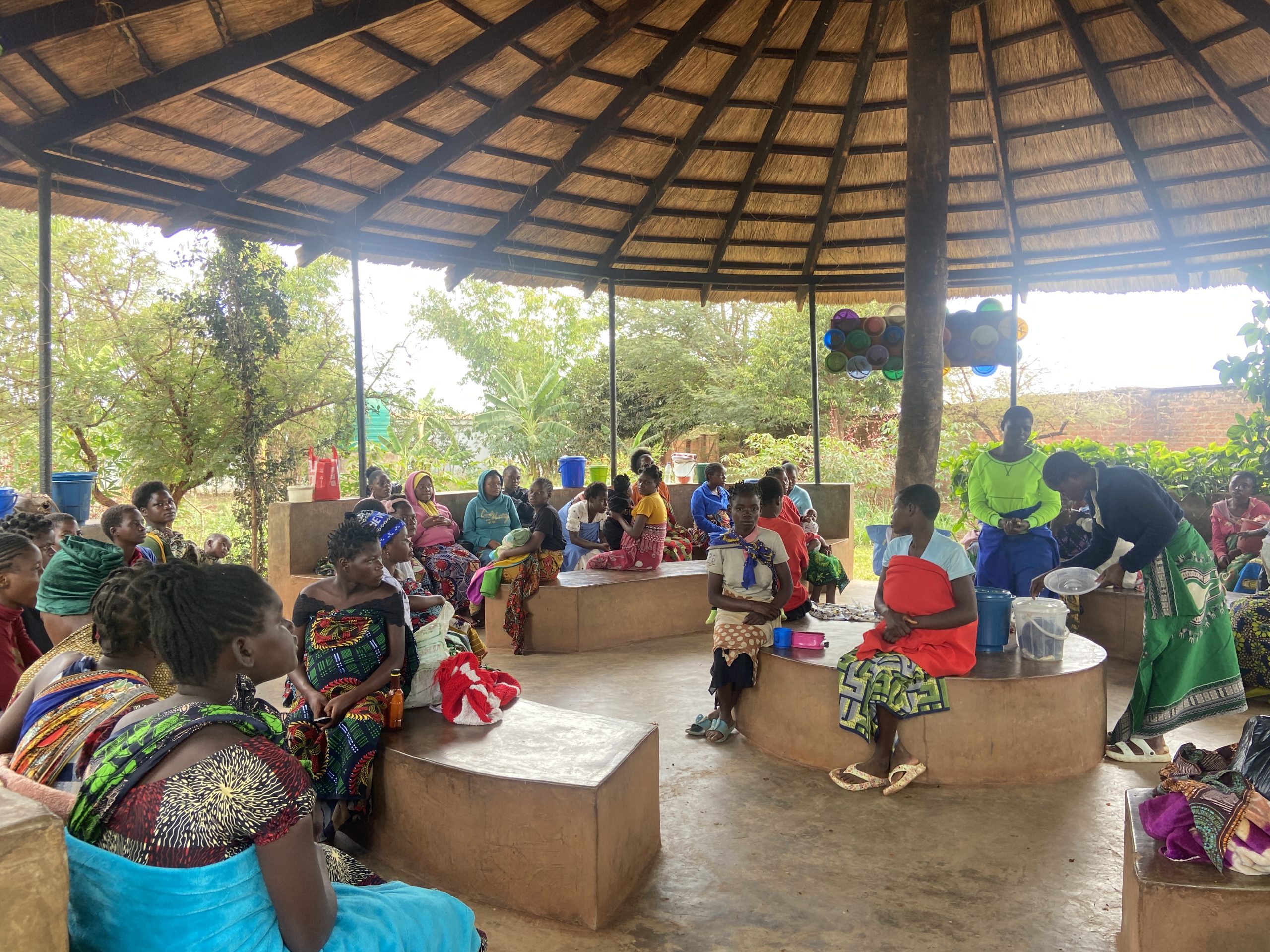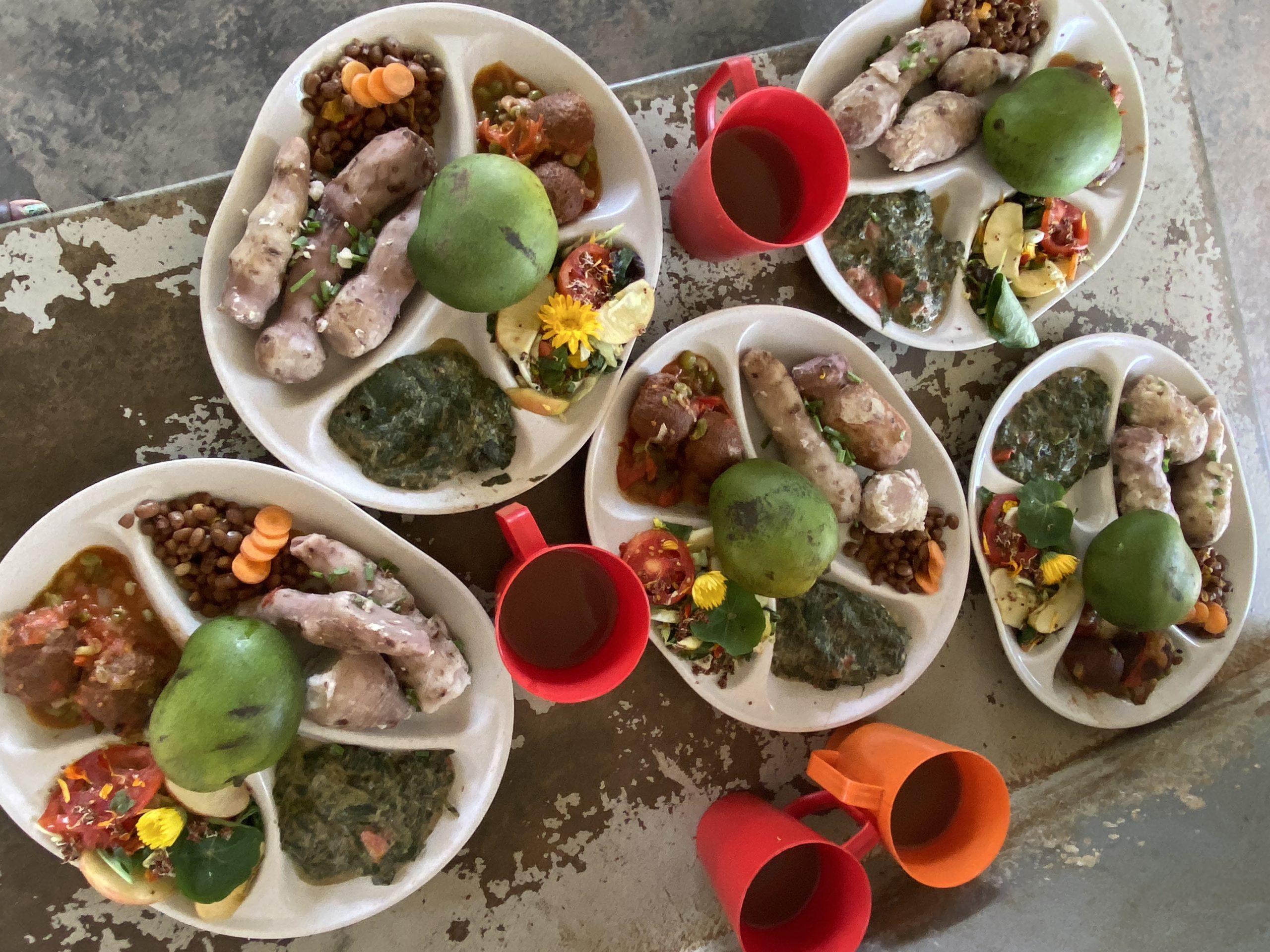Area 25 community hospital
Malawi
The project improves relations with the environment and explores agroecology as a powerful path to both mitigating and adapting to climate change. The project blends agroecology principles with permaculture and resilient design. It is implemented in a Community Hospital working in particular with Pregnant Women, acutely malnourished children (0-15), adolescent mothers, youth and community groups.
Lead organization
Texas Children’s Health Global, Baylor Children’s Foundation, Malawi.
Country
Malawi
Timeline
June 2015 – ongoing
Funding
Baylor foundation for 10+ years, USD 150,000 annually. Donors: Texas Children’s Health Global, Grants and philanthropic funds.
Vision
To eliminate preventable maternal and neonatal morbidity and mortality to empower women to become self-actualized community members.
Mission
Under direction of Malawi Ministry of Health, to provide healthcare for women through delivery of clinical services, mentorship and education, research and measures of effectiveness, and via community outreach and awareness.
Context
The project is implemented in the Central region of Malawi, Lilongwe. Malawi, who’s poverty rate is now 71.2% (World Bank, 2025) has an economy that is primarily dependent on agriculture, with maize being a primarily staple food. The country has been facing consistent climatic shocks and stressors such as severe floods, droughts, seasonal shocks, erratic rainfall, chronic food insecurity that increase health risks and decrease access to quality healthcare. At the Area 25 health centre women that access the services are primarily from a peri-urban area in a population catchment area of 700,000, where the daily income is less than USD2.50. As a Ministry of Health facility, the public private partnership with TCH Global provides free healthcare to all those who access the services. For the last five years the maternal mortality ratio at Area 25 has been less than 50 maternal deaths per 100,000 live births compared with the national average of 400 maternal deaths per 100,000. Similarly, the stillbirth and early neonatal death rate is substantially lower than the national average (0.2% at Area 25 versus 2-3% nationally).
Main beneficiaries
Pregnant Women, acutely malnourished children, with a high percentage of children that are stunted (0-15), adolescent mothers, youth and community groups.
STAKEHOLDERS INVOLVED: government bodies, educational institutions, parastatal and local structures.
Strategy
Types of farms
8 acres of productive spaces filled with ~150 species (medicinal and edible), combining pollinator friendly spaces and agroforestry demonstrations utilising agroecology principles rooted in permaculture design.
Objectives
- Providing healthy and accessible spaces that are inspirational to all that utilise the facility.
- Creating multiple demonstrations – managing grey water, fuel wood sources close to place of need, building soil health on site with direct sources of biomass, clean cooking, food forests, agroecological focused production to generate income
- Reducing maternal and neonatal deaths
- Connecting health education to permaculture/environmental and agroecological education to make the connections apparent
- Providing education and direction on creating dietary diverse, nutritious and delicious meals for all
- Linking an agroecologically based food system to health outcomes through nutritious foods, education, active participation and implementation
- Aid in reforestation of the fastest growing per-urban area in the country through the triple seedling program – for every baby that is born patientsreceive three tree seedlings
The project focuses on Integrating Human Health and Environmental Health purposefully by carefully designed spaces that highlight the relationships between health care and the health of our environment.
The project aims to improve land-use practices through agroecology principles. It aims to increase understanding on environmental stewardship and accessing healthier foods, a better understanding of the food system, improving raw water quality, biodiversity restoration through active biomimicry in human spaces, improving ecosystem services, promoting soil health initiatives, and an overall increase in mitigation and adaptation efforts to climate change.
The project promotes environmental education around a wide range of topics from food security and its connection to nutrition and positive health outcomes, the integration of diverse garden spaces within communities, managing waste and building soils, preparation of diverse foods, climate change impacts and how to build resilience, the importance of tree planting from a household to landscape level, managing natural resources efficiently, and the integration of traditional knowledge. This extends to all teaching being made accessible in the vernacular language. The process is participatory at all levels ensuring respectful maternity care, improving health outcomes (decrease neonatal and maternal deaths) and encouraging an improved quality of life for all. This is accomplished by promoting dietary diversity and influencing how food is grown, active cooking demonstrations and designs that increase productivity, improving a range of habitats thereby ensuring the sustainability of food systems. The aim is to improve access to healthier nutritious food, making food affordable and accessible to everyone and contradict the notion that healthy food is expensive.
The project, strategically placed at a local community hospital, is a center of excellence for learning and demonstrations linking human health outcomes to environmental health outcomes overcoming a siloed approach to solving multiple issues in Malawi. The centre functions as a centre for the community to sensitise all on the variety of interventions including the impact of climate change on health.
Activities
- Daily health talks couple with permaculture design and agroecological education
- Daily healing garden walks that are either silent, meditative, or interactional and are designed to improve observational abilities and hone into all the senses
- Weekly compost making sessions that are connected to how to grow your biomass on site
- Plant identification for increasing intercropping and crop rotation within small spaces
- Home gardens and community gardens to increase accessibility to foods rich in micronutrients
- How to cook for nutrient deficiencies and integrate micronutrients that are readily available
- Garden design competitions where participants are encouraged to identify five different designs in the gardens and create their own garden space
- Weekly cooking demonstrations that connect seasonal harvests to meal preparation
- Three times a week feeding program that covers patients, post operative mothers, adolescent mothers, and participants in the nutrition program
- Weekly food packs for nutrition and adolescent mothers to address food insecurity within households
- Weekly workshops on the following – tree planting, agroforestry, garden design, climate change, soil health, managing greywater, clean cooking, fuelwood alternatives, menu design
- Triple Seedling distribution – connecting the birth of a child to tree seedlings and care for the environment
- Health centers: create Working demonstration linking agroecological principles to improve human health (healthcare perspective)
Effects and Impacts
Adolescent Mother Program
- Over three years, have successfully graduated 386 adolescent mothers through the program that each participated in a 2 year outpatient program influencing nutrition, education and other aspects from 20 weeks pregnant to when their children are 1 year old. 75% of them have accessed family planning alternatives, 40% are enrolled in a livelihoods program that focuses on skills building, and 30% have gone back to school under a scholarship program funded by the program
Nutrition Program
- From January 2024 where the program had 21 participants to currently hosting 156 acutely malnourished children and their guardians – AS an outpatient program, mother/guardians and children come weekly – they receive a meal, foodpack, education session and engage in a creative activity.
- 5 community gardens established that are managed by mothers and guardians in their groups growing a diverse array of plants and integrating agroecological methods
- 5 small enterprises created that make and sell soya milk to both increase nutrition but provide income sources
Feeding Program
In 2024 this extended to post operative mothers, women in labour and delivery and mothers with premature babies to reduce the stress of food preparation.
Evaluation methods
A robust information collection system within all programs to enable successful evaluation every 6 months.
Nutrition program participants are monitored weekly in sections.
Adolescent mothers receive spot check visits every 6 months.
WOmen who stayed in the maternity waiting home for over 2 weeks are also followed up every 6 months to see if there is a change in behaviour.
Results
25000 tree seedlings distributed in 2024 as part of the triple seedling program.
- Wide range of Patients sensitized on dietary diversity:
-
- Soya Milk 1200 Litres prepared
- Tree Planting 4200
- Composting 2220
- Garden Design 2200
- Beneficial Plants 4272
- Nutrition Trainings 5760
- 96 agroecology classes to maternity waiting home patients
- Nutrition Program – 2024
-
- 2968 meals provided weekly to approximately 136 participants and 136 guardians
- 3466 kg of a micronutrient rich porridge mix provided
- Feeding Program – 2024
-
-
- 10200 meals prepared – patients, guardians and staff
- ~220 adolescent mothers were a part of the program in 2024, receiving 1168 meals and 1200kg of a nutritionally diverse porridge
-
Lessons learned
- Programs require well thought out long term interventions to truly impact change at multiple levels:
- Decision making
- Diversity in diets
- Health choices
- Implementation` of agroecological principles within a homestead
- Partnerships with the Ministry of Health and community leaders is critical in influencing change at multiple levels within the healthcare system. This extends to the integration of nutrition into healthcare at multiple levels
- Engagement with the environment is important to understand how it affects health and mental well-being
- Shared knowledge approach and combining that with what exists to make it applicable
- Designing spaces within a healthcare setting require both time and patience and all learnings should be shared whilst connected to local and indigenous knowledge
- All information should be available for multiple literacy levels and in the vernacular language
- It is very important to connect human health to environmental health, this is also in line with the global shift towards purposefully connecting agroecology to health outcomes
- Combining multiple service lines (healthcare, maternal and child health, nutrition, environment and agriculture)aids in overcoming barriers to a siloed approach
- A successful demonstration for all – not many understand what a holistic system that integrates agroecological principles to build resilience to climate looks like.
Enabling conditions
- Unified policies across the healthcare and agricultural system
- An improved and open platform to share information on activities, including learnings – living library
- The connection between climate and agroecology are intricately linked and agroecology is a response to an increasing number of climatic shocks – are there enabling policies for this in country
- Co-creation and co-designing solutions should be integrated from the beginning of the project to ensure uptake and sustainability
- Linking similar thought processes and organisation
- Sustainable food systems are directly linked to agrobiodiversity and are a right to all.
Limiting factors
- Aligning goals of the project with local/national/regional goals
- An increased number of agroecological and food system projects – none of them work together
- All projects are doing there own thing and not actually working together or sharing learnings
- Knowledge and awareness on integrating agroecological principles effectively within a health care setting
- holistic and comprehensive approaches are shunned
- Lack of capital to create sustainability
- Time limits with projects based on funding cycles directly impact the sustainability and longevity of impact. There needs to be a shift in thought on how projects are financed, sustained and the time investment.
- Results on projects as such that are tackling mammoth challenges require time – thinking through impacts and results above and beyond 10+ years
- Monitoring frameworks that are details and applicable, without focusing on targets that have a single touchpoint
Quotes of participants from the maternity waiting home, adolescent program and nutrition program.
We were not able to prepare different nutritious foods from ingredients we didn’t know before, but now have gained new cooking skills and learnt about new plants and spices to improve the flavor of our foods.
We have started community gardens and home gardens, and are now able to access different local food varieties supporting our diets and utilising agroecological principles and permaculture design.
We can now classify the six food groups that we were unable to before and ensure they are being integrated into our meals at least on a weekly basis. This wasn’t something we did before as we were primarily reliant on just nsima (maize flour) for all nutrients.
There is a huge change for both the child and myself , a lot of the children in this program are experiencing a significant change in their weight, muac (mean upper arm circumference), heights have changed compared to before they were enrolled in the nutrition program, for myself, I have gained new skills as well as cooperation with others.
Afshan Omar, Director, Systems Resilience – Malawi Growth Poles Project: afshan.omar@thepalladiumgroup.com and Regenerative Permaculture Co-ordinator, Area 25 Community Hospital, Baylor foundation, Malawi, afshanloom@icloud.com
Picture credits: Afshan Omar




